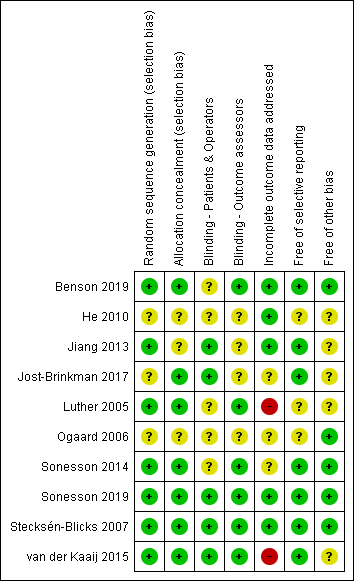Contenido relacionado
Revisiones y protocolos relacionados
Tanya Walsh, Helen V Worthington, Anne‐Marie Glenny, Valeria CC Marinho, Ana Jeroncic | 4 marzo 2019
Valeria CC Marinho, Julian PT Higgins, Aubrey Sheiham, Stuart Logan | 26 enero 2004
Valeria CC Marinho, Julian PT Higgins, Aubrey Sheiham, Stuart Logan | 26 enero 2004
Wafa Kashbour, Puneet Gupta, Helen V Worthington, Dwayne Boyers | 4 noviembre 2020
C Albert Yeung, Lee‐Yee Chong, Anne‐Marie Glenny | 3 septiembre 2015
Stéphanie Tubert‐Jeannin, Candy Auclair, Emmanuel Amsallem, Paul Tramini, Laurent Gerbaud, Christiane Ruffieux, Andreas G Schulte, Martin J Koch, Myriam Rège‐Walther, Amid Ismail | 7 diciembre 2011
Lee‐Yee Chong, Janet E Clarkson, Lorna Dobbyn‐Ross, Smriti Bhakta | 1 marzo 2018
Valeria CC Marinho, Julian PT Higgins, Stuart Logan, Aubrey Sheiham | 20 octubre 2003
Valeria CC Marinho, Helen V Worthington, Tanya Walsh, Jan E Clarkson | 11 julio 2013
Philip Riley, Deborah Moore, Farooq Ahmed, Mohammad O Sharif, Helen V Worthington | 26 marzo 2015
Respuestas clínicas Cochrane
Tina Poklepovic Pericic | 22 enero 2020















